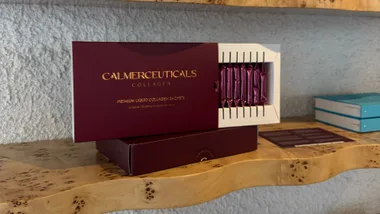Slowing down to speed up is an idea that’s difficult for a lot of us to swallow.
With our busy modern lives and constant social media distractions, taking five to ten minutes a day to slow down and meditate can seem impossible.
Studies have shown that regular meditation can help you focus, better control your emotions, help with addiction issues, and – as one small study concluded – reduce the size of the right amygdala, a region of the brain linked to the processing of negative emotions, especially sadness and anxiety.
This has been further confirmed by new research from the Universities of Coventry and Radboud. The findings suggest that activities such as meditation, yoga and Tai Chi (called mind-body interventions) don’t only work to keep us feeling relaxed, but they can actually ‘reverse’ the cellular reactions to stress which left untreated can result in ill-health and depression.
We chatted to an expert to find out how anyone can squeeze meditation into their busy lifestyles, without much compromise.
Heather Tornes is a Centred Meditation Facilitator practising in Sydney at the Centered Meditation Center.
“Most of us have heard the well-known saying, ‘meditate for an hour a day unless you’re busy, then meditate for two'”, Heather told us.
“I don’t see meditation as ‘compromising our time.’ The way I see it, our time is already compromised.”
“We pack our schedules so full, and keep ourselves so busy and distracted with endless tasks and social media, that we never have a moment just to be. A time to let everything go even for just a minute (or five, or twenty). Time for ourselves to simply relax into the moment create space for ourselves. To sit and enjoy the moment, exactly as it is. To recognise the beauty around us or the incredible miracle of life,” said Heather.
“Now, more than ever, we need space, simplicity, and the tools to be able to relax and let go. Stress and anxiety are two of the biggest diseases affecting workers in developed countries today. Meditation gives us the tools and techniques to deal with both stress and anxiety effectively.”

How to meditate at work
Check your surrounding neighbourhood for a meditation centre (e.g. Centred Meditation in Sydney’s CBD).
There are meditation centres that offer beginner friendly meditation sessions over a lunch time and last 30minutes.
This can be a great option during the work day if it’s convenient for you.
If something like this isn’t available, then try using an app like Headspace to guide you through meditations that last anywhere from 2 minutes- 1 hour.
Headspace has specific meditations for those SOS moments and will guide you through a 2-minute exercise to help deal with times of extreme stress.
Lastly, a relaxing short meditation can be completed at your desk by sitting up tall, relaxing your hands in your lap, rolling your shoulders down and back, gently closing your eyes and taking 3 nice deep breaths.
Focusing on deepening your inhales, and lengthening your exhales.
Mediating on the way to work
If you have a long commute on a train or a bus then download a free meditation app, like Insight timer, and use this time to do a 10 minute guided meditation.
If your commute isn’t long enough to be able to “drop in” to meditation, then you can give Japa meditation a try.
Try this: using a mala necklace with 108 beads, repeat silently (or outloud if you’re either alone or so inclined) a focusing mantra, with a goal or intention of repeating it 108 times, in combination with a deep breathing focus. You can use the beads to count your repetitions.
This can also be done with a beaded bracelet that has 27 beads, and going around it four times.
If you’re driving to work, I don’t suggest meditating. Meditation is not about multitasking.
It’s about giving our minds a bit of space, a bit of freedom, a bit of relaxation from our all consuming and sometimes overwhelming thoughts.











